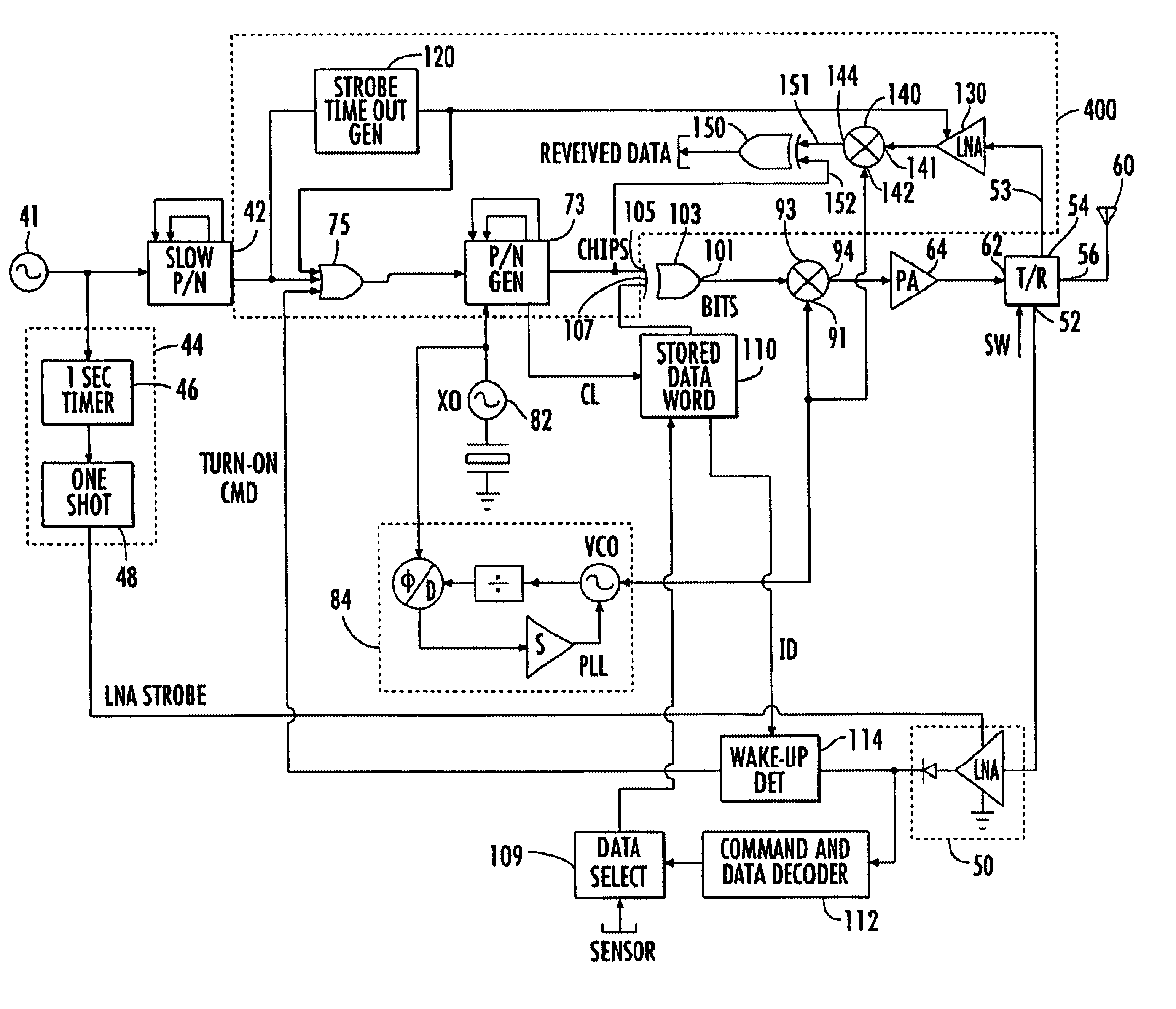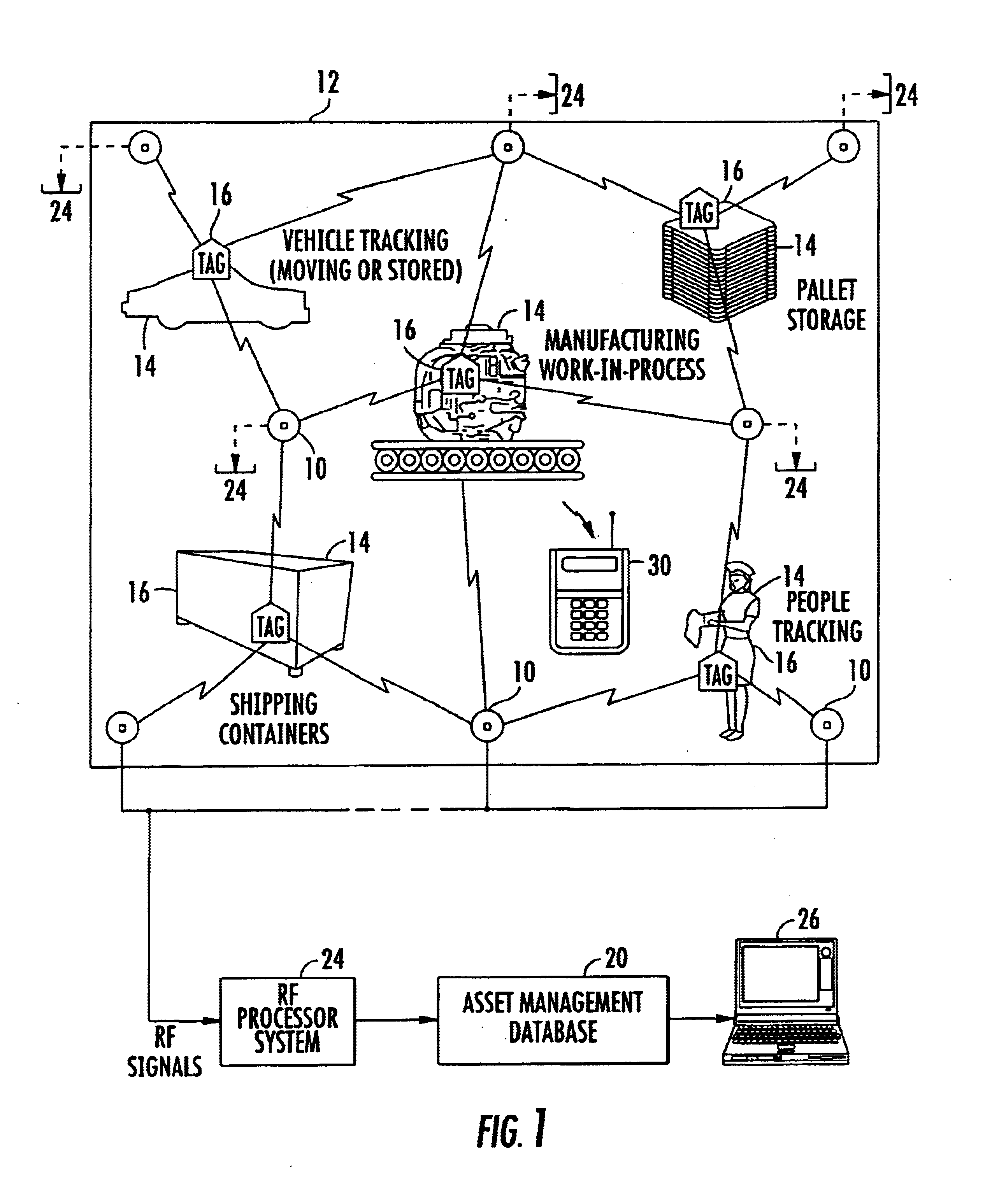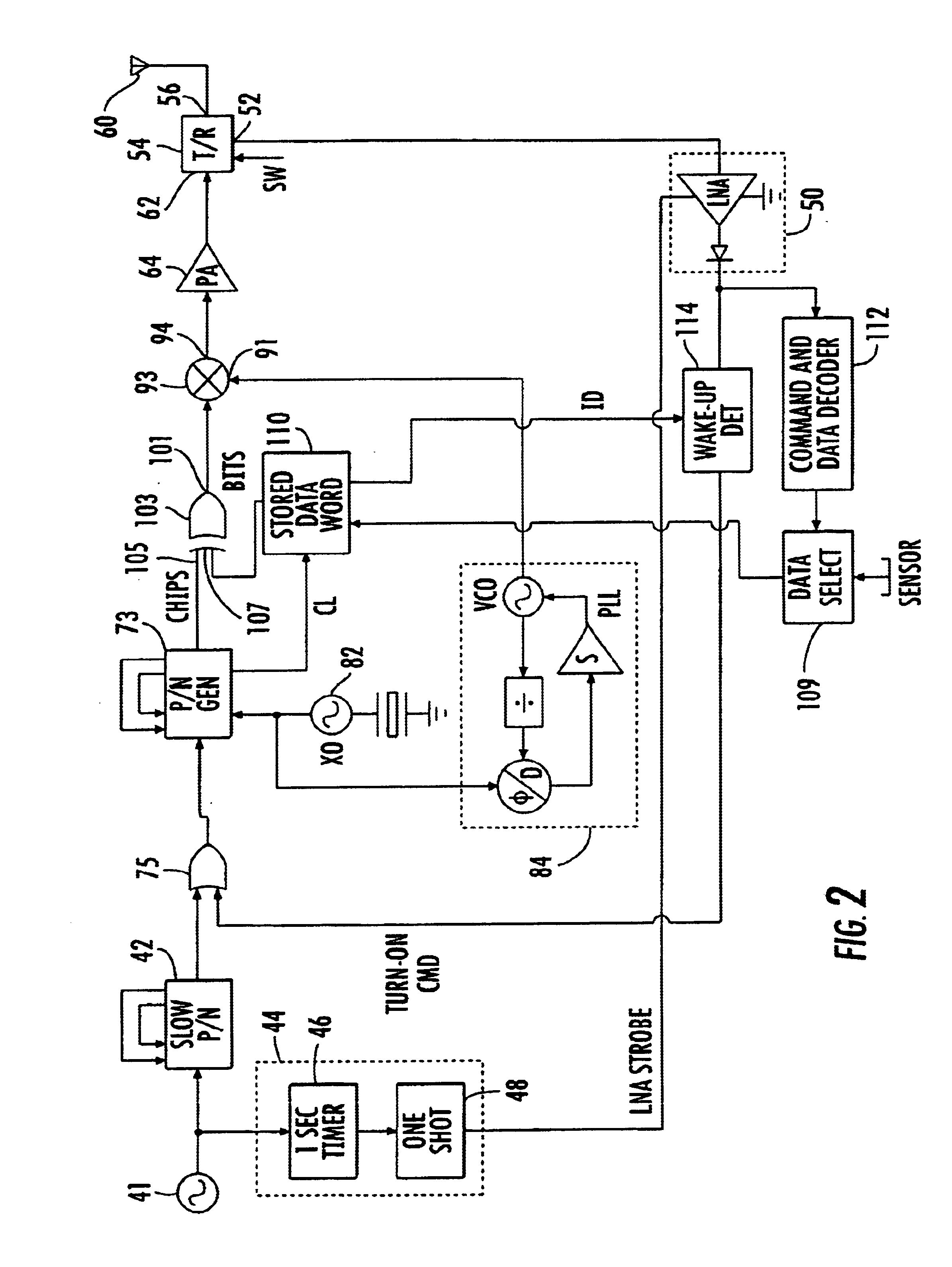Geolocation system with controllable tags enabled by wireless communications to the tags
a wireless communication and geolocation technology, applied in the field of radiotagged object location and tracking system, can solve the problems of not being able to detect (fcc-compliant) communication signals sourced from a relatively remote location, prohibitively expensive addition to the tag's receiver circuitry, and not being able to effectively change the effect of dri
- Summary
- Abstract
- Description
- Claims
- Application Information
AI Technical Summary
Benefits of technology
Problems solved by technology
Method used
Image
Examples
Embodiment Construction
Before detailing the ‘tag clock-synchronized’ return burst transmission scheme of the present invention, it should be observed that the invention is primarily directed to an augmentation to a geolocation system of the type disclosed in the above-referenced Belcher et al '287 and '046 Patents. A first aspect of this augmentation is directed to a modification of the geolocation system's infrastructure that involves the placement in and or around the monitored environment of one or more auxiliary spread spectrum transmitters, whose geo-coordinates are very precisely known (such as, but not limited to the locations of the tag readers). Advantageously, as a complexity and cost reduction measure, the circuitry of these auxiliary transmitters may employ effectively the same transmission architecture as those of the radio tags employed in the above-referenced Belcher et al patents and described previously with reference to FIG. 2.
Operation of a selected auxiliary transmitter is controlled b...
PUM
 Login to View More
Login to View More Abstract
Description
Claims
Application Information
 Login to View More
Login to View More - R&D
- Intellectual Property
- Life Sciences
- Materials
- Tech Scout
- Unparalleled Data Quality
- Higher Quality Content
- 60% Fewer Hallucinations
Browse by: Latest US Patents, China's latest patents, Technical Efficacy Thesaurus, Application Domain, Technology Topic, Popular Technical Reports.
© 2025 PatSnap. All rights reserved.Legal|Privacy policy|Modern Slavery Act Transparency Statement|Sitemap|About US| Contact US: help@patsnap.com



